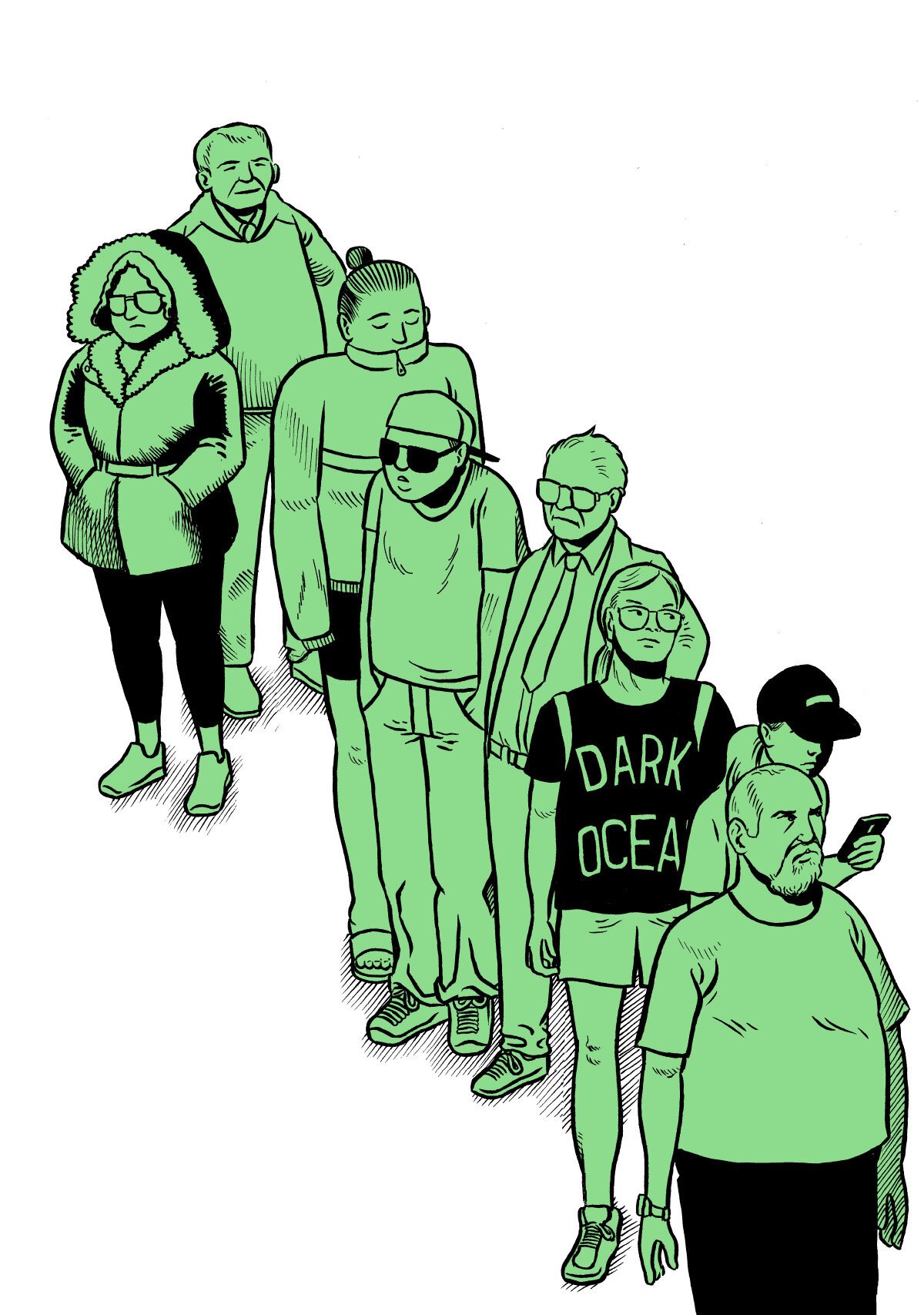
Opioid Treatment Programs
About Depot Bupe
What is buprenorphine (“bupe”) treatment?
Buprenorphine treatment is one of the treatment options available on the Opioid Treatment Program (OTP). The OTP is a ‘maintenance’ program to treat opioid dependency – people on the OTP take a regular prescribed dose of opioid medication (methadone or buprenorphine) to help reduce cravings for non-prescribed opioids. Buprenorphine also can block the effects of other opioids like heroin or oxycodone – some people find this helps them control their use.
What is depot bupe?
Depot bupe is one way to take buprenorphine on the OTP.
There are two types of depot buprenorphine available, and they’re available in different doses. These brands, Buvidal® and Sublocade®, contain only buprenorphine in controlled injections. These injections have to be given by a healthcare professional (i.e. a nurse or physician) - you can’t inject it yourself. Both Buvidal and Sublocade are given as subcutaneous (under the skin) injections, and turn into a ‘depot’ (which is a deposit of the drug) in your body that slowly releases the buprenorphine over the course of one week or one month. You don’t need either product removed before your next injection; your body absorbs the entire dose.
Sublocade and Buvidal come in different strengths. Just like other buprenorphine products, your prescriber will work out your dose based on what they observe and what you tell them. You can go up and down depending on your tolerance and your needs.
How is depot bupe different?
Depot bupe products are much longer-lasting than other OTP meds. Depending on which formulation you’re prescribed, you may only need to go to the clinic for your weekly or monthly injections. Some people will need to go in more often, for case management or other support in between injections. The main difference between depot bupe and other OTP medications is that, for the first time ever, you won’t have to dose every day, negotiate takeaways, or worry about somebody accidentally taking some of your medicine.
Difference between Sublocade and Buvidal
There are some differences - Buvidal is administered either weekly or monthly, while Sublocade is a monthly product only. Buvidal is injected in one of four sites - stomach, upper arm, thigh and buttock. Sublocade is always injected into a site in the stomach area.
Depot bupe: Dose strengths
Buvidal Weekly is available in 4 different dose strengths in prefilled syringes with a 23-gauge needle:
• 8mg/0.16 mL,
• 16mg/0.32 mL
• 24mg/0.48 mL
• 32mg/0.64 mL
Buvidal Monthly is available in 4 different dose strengths in prefilled syringes with a 23-gauge needle:
• 64mg/0.18 mL,
• 96mg/0.27 mL
• 128mg/0.36 mL
• 160mg/0.45mL
Sublocade is available in 2 dose strengths in a prefilled syringe with a 19-gauge needle:
• 100mg/0.5 mL
• 300mg/1.5 mL
Finding out the right dose for you is part of the ‘stabilisation’ stage of the OTP, so there may be a bit of trial and error at the start of your treatment. If you find yourself starting to feel sick before your next dose, get in contact with your treatment team/doctor - they might want to prescribe you a “booster” dose which will be either another injection or a dose of Suboxone.
How much does it cost?
Buvidal and Sublocade are provided via the Pharmaceutical Benefits Scheme. You will need to pay a co-payment every 28 days of either $30.00 for Medicare card holders or $7.30 for concession card holders. It is illegal for any chemist or private clinic to charge additional dispensing fees. If you are at a Public Clinic you will not be charged for your medications.
If you go through a private prescriber such as a GP or to a private clinic, you will likely have to pay for the appointment as well as for the cost of medication. Some GPs will bulk-bill, meaning the cost of the appointment will be completely covered by Medicare.
How do I know if depot bupe is right for me?
There are pros and cons to each of the OTP medications - do some online research about each one, ask people who have tried them, ask your GP, google them, and make a comparison. Talk to your OTP team to find out more - both nurses and prescribers can give you more information. Even if you aren’t on the OTP, you can make an appointment with a prescriber to get some advice. Consumer info booklets are available by calling the Opioid Treatment Line (OTL) on 1800 642 248 (office hours). You can also get advice and/or support by calling NUAA’s PeerLine on 1800 644 413.
In the end, you are in control of your treatment. You should never be forced into a particular treatment or told you will only get a place on the OTP if you choose a particular medication. Make a complaint to the Opioid Treatment Line if this happens to you.
What are some of the benefits of being on depot bupe?
Depot bupe is an effective treatment option for many people, especially those who live in regional and rural areas or have trouble getting to a clinic every day for whatever reason (e.g. work, transport issues, family commitments).
Many consumers feel that they are exposed to less stigma and discrimination as their clinic visits are less frequent. They feel more anonymous and more secure. Other people on depot buprenorphine in NSW stressed how glad they were not to be talking and thinking about drugs every day, as was the case when dosing at a clinic multiple times a week and are now abstinent from all drugs. Overall, most people have been satisfied with depot bupe as an OTP product, and some people even reported finding themselves sleeping better and feeling less depressed.
Pros:
• Total cost is cheaper than OTP treatment through a private clinic.
• More convenience and freedom
• Only having to go to the clinic once a month/greater flexibility
• Not having to wait at the pharmacy while non-OTP customers are served
• Greater mental clarity and energy
• Less likely to use while on it
• Less incentive or possibility of diversion (selling your meds)
• Stable treatment – less of the ups and downs of daily dosing
• Some people reported better sleep
• Much easier to travel on it.
What are some of the problems?
Some of the concerns people shared with us about depot bupe were:
• losing control over how they managed their dosing and takeaways;
• what would happen if they had a bad reaction to the depot products;
• having less regular contact with their clinic and being unsupported when they needed help with things like housing or legal matters.
Others wanted to use illicit opioids sometimes and were worried depot bupe was only for people focused on abstinence (i.e. not using at all). However, while some people who trialled depot bupe said they felt nothing when they used non-prescribed opioids, others said they did get a result. It appears to depend on an individual’s metabolism, different dose strengths, and when in the month they were using (in relation to when they had their injection).
A major concern was the unknowns around coming off depot bupe. Depot bupe products can hold you for much longer than other OTP meds because they last in your system a long time. People that we talked to who had come off it said they didn’t experience withdrawal symptoms - even up to 2 years after their last dose!
Currently, there isn’t a lot of information available around what withdrawals from depot bupe will be like, how long it will take for the withdrawal symptoms to stop, or whether you will experience any withdrawal symptoms at all. We also don’t know how severe or long-lasting they will be.
Cons:
• Less contact with healthcare team
• Weekly or monthly injections that many people find painful
• Long withdrawal times and delayed withdrawal if/when you decide to exit the program
• Some people reported being restless and having too much energy the first 48 hours after their injection
How do I start on depot bupe and where can I get it?
How you start treatment with depot bupe will depend on your reason for taking the medication. If you are on sublingual buprenorphine (Suboxone or Subutex) you can go directly onto depot bupe. If you are using heroin or short-acting prescribed opioids (e.g. morphine, oxycodone) you can either start treatment with depot bupe directly or start after a short period on sublingual buprenorphine to ensure you have no side effects. The way you start treatment may also depend on whether you are prescribed Buvidal or Suboxone.
Transferring to depot bupe from methadone be more complicated. For example, taking buprenorphine can bring on some withdrawal symptoms if you have been taking methadone. For this reason, it is advised you always seek the advice of your treatment team/prescriber if transferring from methadone to a depot bupe product.
Depot buprenorphine is only available at services with the facilities to store and inject the medication. You have to be injected by a doctor or nurse - you can’t fill the prescription and inject it yourself. Talk to your current prescriber about your options if you are on the OTP already and want to move across to depot bupe. If you are not yet on the program, you can find a clinic by calling the Opioid Treatment Line (OTL) on 1800 642 248 (office hours).
Interested in more info?
For more information about Depot Bupe, and to talk to someone who is knowledgeable on this topic, you can contact NUAA’s PeerLine 1800 644 413. You can also contact the Opioid Treatment Line on 1800 642 248 (office hours).
